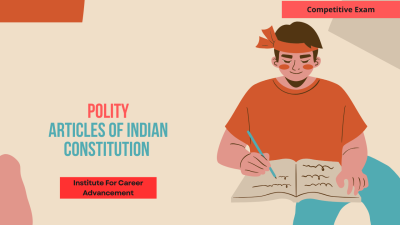Course description
The Verb course is designed to provide learners with a comprehensive understanding of verbs in the English language. Verbs are essential components of sentences, serving as action words or linking words that express what the subject does or what the subject is. This course will cover the different types of verbs, their forms, tenses, and grammatical rules, enabling students to use verbs accurately and effectively in their writing and speaking.
1. Introduction to Verbs
Definition of verbs and their importance in sentence structure.
Overview of the role of verbs in expressing actions, occurrences, and states of being.
2. Types of Verbs
Action Verbs: Verbs that express physical or mental actions (e.g., "run," "think").
Linking Verbs: Verbs that connect the subject with additional information (e.g., "be," "seem").
Auxiliary (Helping) Verbs: Verbs used with main verbs to form different tenses, moods, or voices (e.g., "have," "will," "can").
3. Verb Forms
Understanding base forms, past forms, and participles.
Exploring irregular verbs and their conjugations.
Practice forming different verb tenses.
4. Tenses and Their Usage
Present Tense: Simple present, present continuous, present perfect, and present perfect continuous.
Past Tense: Simple past, past continuous, past perfect, and past perfect continuous.
Future Tense: Simple future, future continuous, future perfect, and future perfect continuous.
Understanding the context for using each tense.
5. Subject-Verb Agreement
Rules for ensuring subject and verb agreement in number and person.
Identifying common pitfalls and exceptions to the rules.
6. Verb Phrases and Clauses
Understanding how verbs work within phrases and clauses.
Identifying main verbs and auxiliary verbs in complex sentences.
7. Active vs. Passive Voice
Understanding the difference between active and passive voice.
Learning when and how to use passive constructions effectively.
8. Modal Verbs
Introduction to modal verbs (e.g., "can," "could," "may," "might," "must").
Understanding their use in expressing ability, permission, obligation, and possibility.
9. Common Errors and Challenges
Identifying and correcting common verb-related mistakes in writing and speaking.
Strategies for avoiding confusion with irregular verbs and verb forms.
10. Practical Exercises and Application
Engaging in exercises that reinforce the understanding and application of verbs in various contexts.
Real-world writing and speaking activities to practice verb usage effectively.
ভর্ব কোর্সটি শিক্ষার্থীদের ইংরেজি ভাষায় ক্রিয়াগুলির একটি বিস্তৃত বোঝার জন্য ডিজাইন করা হয়েছে। ক্রিয়াগুলি বাক্যের অপরিহার্য উপাদান, যা ক্রিয়া শব্দ হিসাবে কাজ করে বা এমন শব্দগুলিকে সংযুক্ত করে যা বিষয় কী করে বা বিষয় কী তা প্রকাশ করে। এই কোর্সে বিভিন্ন ধরনের ক্রিয়া, তাদের রূপ, কাল এবং ব্যাকরণগত নিয়ম অন্তর্ভুক্ত থাকবে, যা শিক্ষার্থীদের তাদের লেখা এবং কথা বলার ক্ষেত্রে সঠিক এবং কার্যকরভাবে ক্রিয়া ব্যবহার করতে সক্ষম করবে।
1টি। ক্রিয়াপদের পরিচিতি
ক্রিয়াপদের সংজ্ঞা এবং বাক্য গঠনে তাদের গুরুত্ব।
ক্রিয়া, ঘটনা এবং অস্তিত্বের অবস্থা প্রকাশের ক্ষেত্রে ক্রিয়াপদের ভূমিকার সংক্ষিপ্ত বিবরণ।
2. ক্রিয়াপদের প্রকার
ক্রিয়া ক্রিয়াঃ শারীরিক বা মানসিক ক্রিয়া প্রকাশ করে এমন ক্রিয়া (e.g., "run," "think").
ক্রিয়াগুলিকে সংযুক্ত করাঃ ক্রিয়াগুলি যা বিষয়টিকে অতিরিক্ত তথ্যের সাথে সংযুক্ত করে (e.g., "be," "seem").
সহায়ক (সহায়ক) ক্রিয়াঃ বিভিন্ন কাল, মেজাজ বা কণ্ঠস্বর গঠনের জন্য প্রধান ক্রিয়াগুলির সাথে ব্যবহৃত ক্রিয়া (e.g., "have," "will," "can").
3. ক্রিয়াপদের রূপ
মৌলিক রূপ, অতীত রূপ এবং অংশগ্রহণগুলি বোঝা।
অনিয়মিত ক্রিয়া এবং তাদের সংমিশ্রণগুলি অন্বেষণ করা।
বিভিন্ন ক্রিয়া কাল তৈরি করার অনুশীলন করুন।
4. কাল এবং তাদের ব্যবহার
বর্তমান কালঃ সরল বর্তমান, বর্তমান অবিচ্ছিন্ন, বর্তমান নিখুঁত এবং বর্তমান নিখুঁত অবিচ্ছিন্ন।
অতীত কালঃ সরল অতীত, অতীত অবিচ্ছিন্ন, অতীত নিখুঁত এবং অতীত নিখুঁত অবিচ্ছিন্ন।
ভবিষ্যৎ কালঃ সরল ভবিষ্যৎ, ভবিষ্যৎ ধারাবাহিক, ভবিষ্যৎ নিখুঁত এবং ভবিষ্যৎ নিখুঁত ধারাবাহিক।
প্রতিটি কাল ব্যবহার করার প্রেক্ষাপট বোঝা।
5. বিষয়-ক্রিয়া চুক্তি
সংখ্যা এবং ব্যক্তির মধ্যে বিষয় এবং ক্রিয়া চুক্তি নিশ্চিত করার জন্য নিয়ম।
নিয়মের সাধারণ ত্রুটি এবং ব্যতিক্রমগুলি চিহ্নিত করা।
6টি। ক্রিয়া বাক্যাংশ এবং ধারাগুলি কীভাবে ক্রিয়াগুলি বাক্যাংশ এবং ধারাগুলির মধ্যে কাজ করে তা বোঝা
জটিল বাক্যে প্রধান ক্রিয়া এবং সহায়ক ক্রিয়া চিহ্নিত করা।
7. সক্রিয় বনাম। প্যাসিভ ভয়েস
সক্রিয় এবং প্যাসিভ ভয়েসের মধ্যে পার্থক্য বোঝা।
কখন এবং কীভাবে প্যাসিভ কনস্ট্রাকশনগুলি কার্যকরভাবে ব্যবহার করতে হয় তা শিখুন।
8. মডেল ক্রিয়া
মডেল ক্রিয়াপদের পরিচিতি (e.g., "can," "could," "may," "might," "must").
ক্ষমতা, অনুমতি, বাধ্যবাধকতা এবং সম্ভাবনা প্রকাশের ক্ষেত্রে তাদের ব্যবহার বোঝা।
9টি। সাধারণ ভুল এবং চ্যালেঞ্জ
লিখিত এবং কথা বলার ক্ষেত্রে ক্রিয়া-সম্পর্কিত সাধারণ ভুলগুলি চিহ্নিত করা এবং সংশোধন করা।
অনিয়মিত ক্রিয়া এবং ক্রিয়া রূপের সাথে বিভ্রান্তি এড়ানোর কৌশল।
10। ব্যবহারিক ব্যায়াম এবং প্রয়োগ
বিভিন্ন প্রসঙ্গে ক্রিয়াপদের বোঝাপড়া এবং প্রয়োগকে শক্তিশালী করে এমন অনুশীলনে জড়িত হওয়া।
কার্যকরভাবে ক্রিয়া ব্যবহার অনুশীলনের জন্য বাস্তব-বিশ্বের লেখা এবং কথা বলার ক্রিয়াকলাপ।




















